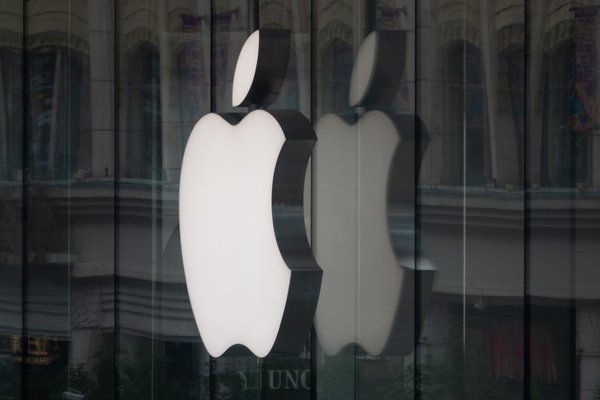Apple reported iPhone sales numbers that surpassed Wall Street’s expectations on Thursday for its third-quarter earnings, thanks to a boost from a tariff-related surge in demand and a rebounding China market.
Suggested Reading
Its stock opened at $210.86 Friday after closing at $207.57 Thursday before its earnings came out, but following, shares were up about 3% in after-hours trading. The stock has been down almost 15% so far this year.
Related Content
Better-than-expected global iPhone sales growth
Rising far above net sales expectations of $40.29 billion, the iPhone garnered $44.58 billion, an increase of 13% from last year, Wedbush analysts said Friday.
Apple’s revenue grew 10% year-over-year with a reported $94 billion in revenue, and CEO Tim Cook said during the company’s earnings call that the company estimates about 1 point of the 10 percentage points to be from consumers buying ahead of tariff concerns. Jeffries analysts said on Friday they believe it is difficult to distinguish between this pull-in and genuine demand, but wrote, “The much stronger than historical seasonality, no particular change in consumer habits and incremental features of iPhone 16, and commentary by the likes of US telcos all suggest pull-in due to tariff concern is a big factor.”
China’s market bounces back
Apple reported net sales in China of $15.36 billion after the smartphone maker finally saw growth again in China
“Its successful promotions in China during 618 helped AAPL recover lost market share, and likely boost iPhone sales growth by HSD,” Jeffries analysts said.
However, it may not be enough to propel the company back to the top spot in the country’s smartphone market. A recent report found that Apple’s second-quarter iPhone sales placed the once market-dominating smartphone producer in fifth place in China’s market, trailing behind its biggest local competitor, Huawei.
“The Greater China region saw a strong rebound from its prior quarters of negative growth seeing 4% y/y growth due to strength from iPhone upgraders and strong demand for its Mac products, including the MacBook Air and Mac mini, while the recent government subsidies provided a positive impact for the quarter,” Wedbush analysts also noted.
Looming tariff concerns
Apple was hit with tariff costs of about $800 million in its third quarter, Cook said in the call. He had previously stated tariffs would impact the company for $900 million in the last quarter.
In its September quarter, the company estimates tariffs will add about $1.1 billion to its costs “assuming the current global tariff rates, policies and applications do not change for the balance of the quarter and no new tariffs are added,” Cook said.
“Last quarter, the bulk of the tariffs that we paid were the IEEPA tariffs that hit early in the year related to China,” he added. “And so that’s just a reminder of where things are and what we assumed as we calculated the projection of $1.1 billion that’s in our outlook color.
China, where Apple manufactures many of its products, currently has a tariff rate of 30%, and an interim accord with China will likely be extended past Aug 12, according to U.S. officials.
Apple is trying to transition its operations from China to India, with the goal of building all U.S.-sold iPhones in that country by the end of 2026, but India was hit with a 25% tariff rate on Friday, which threatens to increase tariff-related costs for the tech giant for future quarters even if it moves.
Cook noted in the call that the majority of iPhones sold in the U.S. are made in India while the majority of other products, like the Mac, iPad, and Apple Watch, are made in Vietnam. Apple products sold to countries outside of the U.S. are primarily made in China.
Vietnam was also hit with a 20% tariff rate.
Jeffries analysts said that Apple anticipates its revenue growth in its fourth quarter to be similar to last quarter. However, they think these projections are optimistic, since “part of the strength in the Jun Q iPhone growth is likely due to pull-in” related to tariffs. They forecast only 3% iPhone revenue growth in Apple’s next earnings report.
Jeffries analysts said they remain “unexcited” about Apple’s future prospects due to tariff concerns, rising bill of materials costs, slow AI traction, and more.
Still, no AI plan
While Apple’s iPhone sales momentarily pushed concerns aside, analysts still want answers to the tech giant’s floundering AI plan.
“AI is the elephant in the room. While Apple is expanding its AI investments internally, the reality is its not moving the needle and patience is wearing thin about investors,” according to Wedbush analysts. “It’s clear to us the innovations around AI are not going to come from Apple Park…it has to be external partnerships and significant M&A looking ahead.”
The analysts added that they believe Apple should acquire Perplexity to catalyze its AI strategy.
“The AI Revolution is the biggest technology trend in 40 years and right now Apple is watching this from a park bench drinking lemonade while every other Big Tech company is racing ahead like F1 drivers building out its AI strategy and monetization plan,” the analysts said. “Time is ticking for Cook to find the answer.”
The company’s AI struggles were on full display at its Worldwide Developers Conference in June, where AI announcements were widely seen as underwhelming compared to competitors like Google. Plus a Bloomberg report from July found that Apple might bench its own generative AI technology and instead use either Anthropic or OpenAI’s tech to power a Siri update due next year.
— Joseph Zeballos-Roig contributed to this article.

